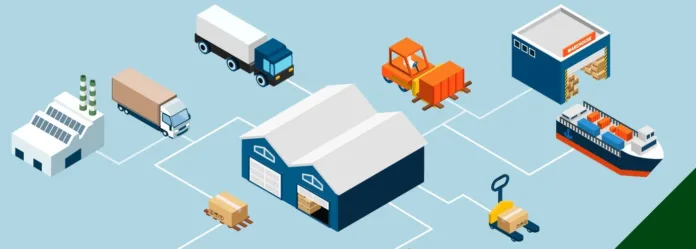A well-optimized supply chain is a critical component of a successful business. It ensures that products or services are delivered efficiently, costs are minimized, and customer satisfaction is maintained. In today’s highly competitive market, improving supply chain efficiency is more important than ever. Here are six tips to help you enhance your supply chain operations.
1. Demand Forecasting
Accurate demand forecasting is the cornerstone upon which a streamlined supply chain rests. It serves as the guiding light for optimizing various facets of your supply chain, including inventory levels, production schedules, and distribution strategies. In this data-driven age, understanding customer demand patterns is paramount.
By delving into historical sales data and harnessing data analytics, you can glean invaluable insights into what drives consumer behavior. These insights empower you to make more informed decisions, fine-tune your supply chain operations, and align them closely with actual demand. This not only minimizes the risks associated with overstocking or stockouts but also enhances your overall supply chain efficiency, contributing to smoother operations and improved customer satisfaction.
2. Supplier Relationships
Strong relationships with suppliers are essential for a smooth supply chain. Collaborate closely with key suppliers to enhance communication, reduce lead times, and negotiate favorable terms. Building trust and transparency can lead to better reliability and cost savings. Supply chain planning can be difficult to get right, so talking to experts in the field can streamline your processes and have everything running smoothly.
3. Inventory Management
Effective inventory management is a critical component of supply chain efficiency. It entails striking a delicate balance between minimizing carrying costs and ensuring that products are readily available to meet customer demand. One highly effective approach is the implementation of just-in-time (JIT) inventory systems, which emphasize keeping inventory levels lean and responsive to actual demand.
With JIT, you maintain only the inventory required for immediate production or customer orders, reducing storage expenses and the risk of holding excess or obsolete stock. Regularly reviewing stock levels and optimizing reorder points is essential for JIT success. By fine-tuning your inventory management practices, you not only reduce carrying costs but also free up capital for other strategic investments, ultimately bolstering your supply chain efficiency.
4. Technology Integration
Embracing cutting-edge technology is pivotal in today’s fast-paced business environment. It’s imperative to invest in state-of-the-art supply chain management software and advanced technologies that offer real-time visibility into your operations. These tech-driven solutions provide you with a comprehensive and up-to-the-minute view of your supply chain, enabling you to track shipments in real-time, monitor inventory levels with precision, and swiftly identify potential bottlenecks or disruptions before they escalate.
With the power of technology at your fingertips, you can proactively address issues, optimize routes, and fine-tune processes to ensure seamless operations. This proactive approach not only minimizes the risk of costly disruptions but also enhances overall supply chain efficiency, ensuring that products reach customers promptly and in optimal condition.
5. Transportation Optimization
Evaluate your transportation and logistics strategies meticulously to uncover opportunities for optimization. Delve deep into the intricacies of your supply chain to pinpoint areas for improvement. This may involve consolidating shipments, exploring alternative transportation modes, or strategically outsourcing logistics operations to trusted third-party providers. These strategic moves not only help in cost reduction but also enhance delivery efficiency, resulting in faster and more cost-effective transportation solutions.
6. Continuous Improvement
Fostering a culture of continuous improvement is a linchpin of sustainable supply chain excellence. It begins by instilling a mindset of perpetual enhancement within your organization. Encourage employees at all levels to actively participate in this culture by identifying inefficiencies, proposing innovative solutions, and sharing their insights on how to make processes more streamlined and efficient.
In Conclusion
A well-improved supply chain can be a significant competitive advantage for your business. By implementing these tips and continuously monitoring and refining your supply chain strategies, you can enhance efficiency, reduce costs, and ultimately provide better service to your customers. In today’s fast-paced business environment, supply chain optimization is not a luxury; it’s a necessity for long-term success.


